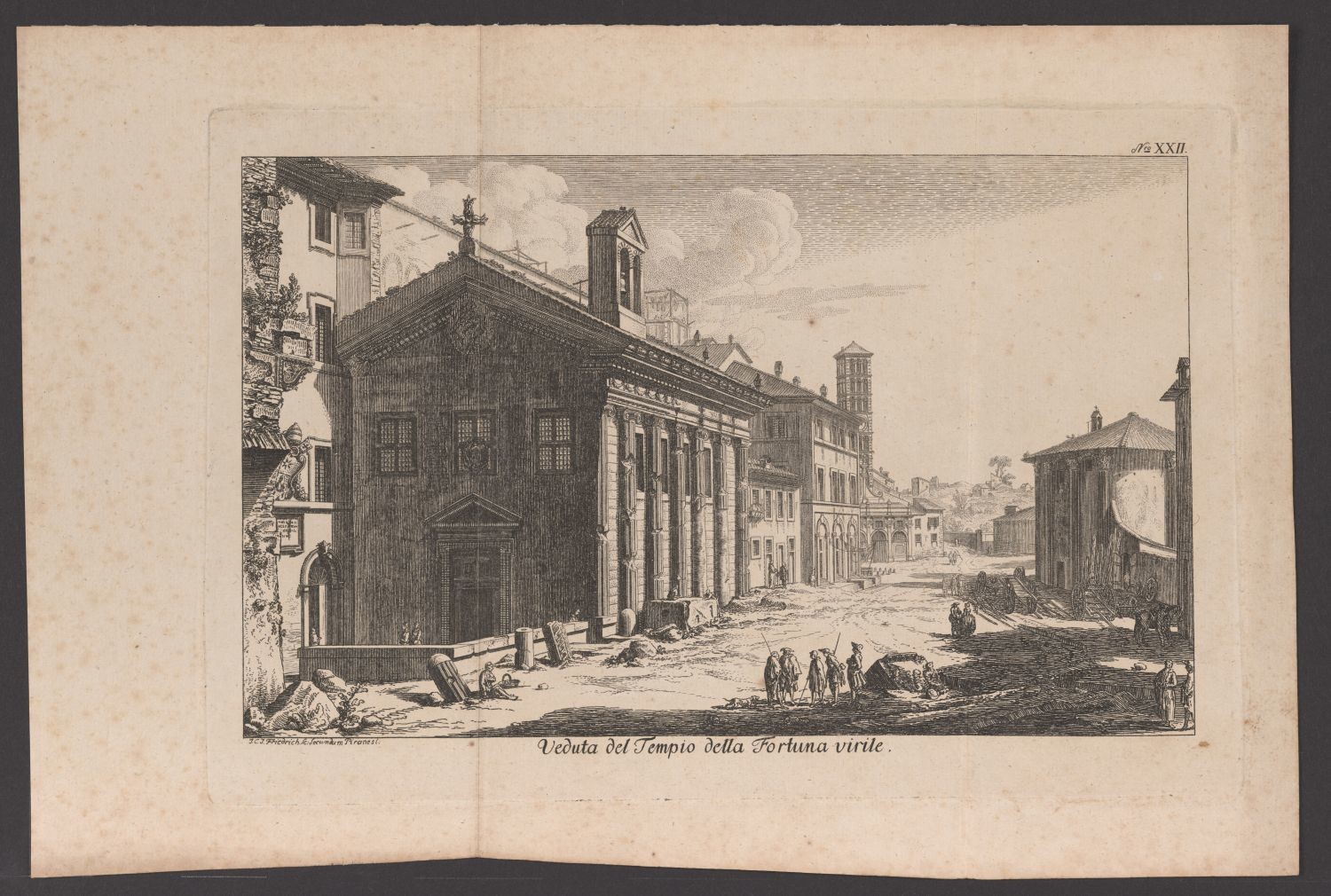Das Blatt zeigt eine Ansicht des Tempel des Portunus, der seit der Renaissance fälschlicherweise als Tempel der Fortuna Virilis bezeichnet wurde. Im 9. Jahrhundert n. Chr. wurde er umgewidmet und eine christliche Kirche darin eingerichtet. Im Hintergrund des Stiches ist der Turm der Chiesa di S. Maria in Cosmedin zu sehen.
Der Stich wurde von Giovanni Battista Piranesi (1720-1778) entworfen. Gestochen wurde es von dem in Dresden tätigen Kupferstecher Jacob Friedrich (1746-1813). Das Blatt ist Teil einer Sammlung von Radierungen von Friedrich und trägt die Nummer 22.
Signatur: J. C. J. Friedrich Sc: Secundum Piranesi. No. XXII.
Beschriftung: Veduta del Tempio della Fortuna virile.
en

